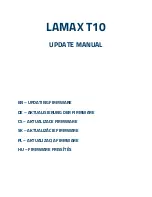
— 01 —
— 02 —
— 03 —
— 04 —
— 05 —
— 06 —
— 07 —
— 08 —
— 09 —
— 10 —
— 11 —
— 12 —
— 13 —
— 14 —
— 15 —
— 16 —
— 17 —
— 18 —
— 19 —
— 20 —
— 21 —
— 22 —
— 23 —
— 24 —
— 25 —
— 26 —
— 27 —
— 28 —
— 29 —
— 30 —
— 31 —
— 32 —
— 33 —
— 34 —
— 35 —
— 36 —
— 37 —
— 38 —
— 39 —
— 40 —
— 41 —
— 42 —
— 43 —
— 44 —
— 45 —
— 46 —
— 47 —
— 48 —
— 49 —
— 50 —
— 51 —
— 52 —
— 53 —
— 54 —
— 55 —
— 56 —
— 57 —
— 58 —
— 59 —
— 60 —
— 61 —
— 62 —
— 63 —
— 64 —
— 65 —
— 66 —
— 67 —
— 68 —
— 69 —
— 70 —
— 71 —
— 72 —
— 73 —
— 74 —
— 75 —
— 76 —
— 77 —
— 78 —
— 79 —
— 80 —
— 81 —
— 82 —
— 83 —
— 84 —
— 85 —
— 86 —
— 87 —
— 88 —
— 89 —
— 90 —
— 91 —
— 92 —
— 93 —
— 94 —
— 95 —
— 96 —
— 97 —
Installation
1. Connect the Dash Cam and the Mount
2. Install the Front Camera
①
Clean the area on the windshield where the dash cam will be installed.
②
You can attach the suction cup mount or adhesive mount to the windshield
where it will not obstruct the driver’s view.
(Note: If you use adhesive mount, please attach static stickers to prevent the
adhesive from sticking to dirty up the clean windshield of your car.)
③
You can adjust the lens angle of mounting, make sure that the camera’s view is
parallel with the level ground.
3. Install the Rear Camera
The installation location of rear camera is actually quite flexible, so there are two
highly recommended locations with different angles of visions.
A1:
The best location of vision from height, which has a full range view, and is very
easy to install.
A2:
Traditional rear camera location, bring limited vision (upper), and professional
assistance is required when installing.
Note:
The installation illustrations are for your reference only. The placement of the
devices and cables may vary depending on the car model. If you encounter any
problems during installation, contact a skilled installer (such as the service
personnel of the car) for assistance.









































